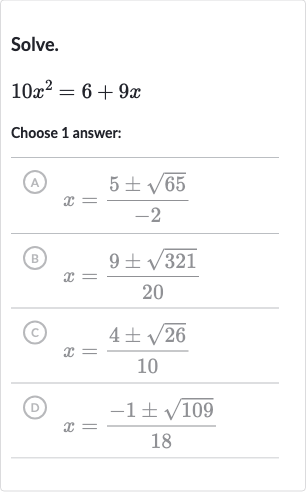AI tutor
Full solution
Q. Solve.Choose answer:(A) (B) (C) (D)
- Rewrite equation in standard form: First, we need to rewrite the equation in standard quadratic form, .
- Identify coefficients: Identify the coefficients , , and to use in the quadratic formula. In this equation, , , and .
- Apply quadratic formula: The quadratic formula is . Substitute the values of , , and into the formula.
- Calculate discriminant: Simplify the equation by calculating the discriminant (the part under the square root).Discriminant =
- Insert discriminant into formula: Now, insert the discriminant back into the quadratic formula.
- Solve for x: The solutions to the equation are therefore:x = and x =
More problems from Solve a quadratic equation using the quadratic formula
QuestionGet tutor help
QuestionGet tutor help
QuestionGet tutor help
QuestionGet tutor help
QuestionGet tutor help
QuestionGet tutor help
QuestionGet tutor help
QuestionGet tutor help

